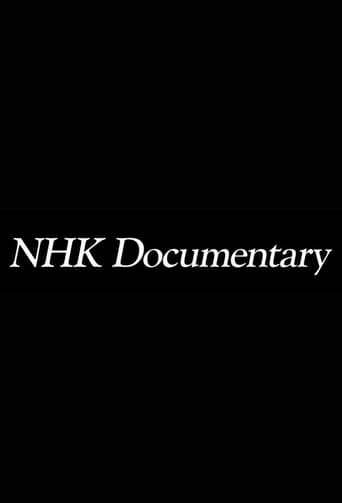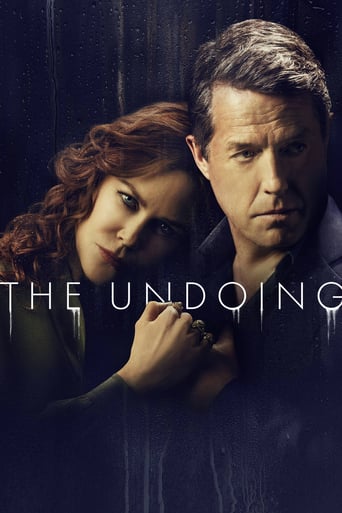
Trailer
Synopsis
Hard-hitting documentary series that takes an in-depth look at some of the political, economic, and social challenges that Japan and our world is facing.
Episode 35 : Medical Revolution: The Gut Microbiome
December. 25,2016
Episode 34 : A Village among Active Faults
December. 18,2016

2 active faults triggered an earthquake in Kumamoto Prefecture that measured a maximum 7 on Japan's seismic intensity scale. Most of the houses in an area of one village came crashing down. The residents there had to make a tough choice: Either rebuild their homes and live with the risks posed by the faults, or leave the community they love and relocate to safer area. This is a chronicle of their lives during the first 6 months after the disaster.
Episode 33 : Ambush in Cambodia: Death of a Japanese Police Officer
December. 11,2016

In 1993, a Japanese civilian police officer taking part in a United Nations peacekeeping operation in Cambodia was killed. It was the first such mission under Japan's pacifist constitution. A ceasefire was supposed to be in place, but the officer and his colleagues were attacked in an ambush. On this program, his former colleagues break more than 20 years of silence, helping to shed light on the harsh reality the men encountered.
Episode 32 : Autonomous Driving, The Revolution
December. 04,2016

Once a dream car, today the autonomous vehicle is becoming a reality. The global competition to develop such vehicles is heating up, and the first company to have the upper hand will win. The autonomous driving revolution will have a major impact on vehicle manufacturing, and will likely change society forever. But creating an autonomous vehicle means understanding computers. This means automakers have to compete with IT firms including Google. Come explore the frontlines of this revolution.
Episode 31 : Executive Non Decision: A-Bomb History Rewritten
November. 27,2016

In 1945, the United States dropped 2 atomic bombs on Japan. Then President Harry Truman explained the decision was made to save thousands of American lives. People have accepted this explanation without question for decades. But recently, materials have surfaced that paint a more nuanced picture of what actually occurred. This program reexamines events in the months leading up to the bombings, and tries to determine how one of the most important events in history was rewritten after the war.
Episode 30 : Running in God's Territory: Patagonia's Extreme Trail Race
November. 13,2016

Runners battle rough terrain in what is called the toughest race in the world. Competitors race all day and night in a natural setting that can quickly turn ferocious and dangerous. It's the trail running race in Patagonia, Chile. Only 30% of entrants make it. A grueling 141-kilometer test of endurance. The astounding power hidden in the runners' muscles pushes beyond the breaking point, and they start to lose the sense of vision and even themselves. This is "God's Territory".
Episode 29 : Road to Redemption
October. 23,2016

7 decades ago, 2 men stood on opposite sides of the front line in World War II. Mitsuo Fuchida was the chief commander of Japan's attack on Pearl Harbor. Jacob DeShazer, a US Army Air Force corporal, dropped incendiary bombs on Nagoya in a revenge raid. After the war, both became devout Christians and embarked on missions in each other's homeland. They met, and forged a firm bond. This story of former soldiers who overcame hatred and embraced peace carries a message that resonates today.
Episode 28 : The Last Isolados: Unknown People of the Amazon
October. 09,2016

"Isolados": This is the name given to indigenous people deep in the Amazon who had almost no contact with the outside world for 100 years. Recently, they have started to emerge. But encounters have turned bloody, and contact exposes the Isolados to the risk of disease. The Peruvian government is attempting to reach out, so it may put the group under its control. NHK traveled to a remote outpost to document one such meeting with a people who experts say may disappear in as little as 2 years.
Episode 27 : Miracle Body: Russia's Golden Mermaids
September. 25,2016

The world's top synchronized swimmers Natalia Ishchenko and Svetlana Romashina have an impossible stunt called The Russian Roulette, where the two move their legs at breakneck speed during a routine when oxygen levels drop dangerously.
Episode 26 : Killer Stress: The Remedies
September. 18,2016

Stress can kill. Recent studies have revealed that extreme stress can be life threatening, and cause serious mental disorders including depression and dementia. How does stress trigger abnormal conditions that destroy the brain? This program tracks the latest scientific research into the mechanisms of stress, and features innovative and easy ways to keep it from killing you.
Episode 25 : Killer Stress: The Causes
August. 28,2016

If you think it's "just" stress, think again. Intense stress can ruin your health and even take your life. Recent studies in the fields of physiology, psychology and brain science have revealed a complex mechanism. Stress can trigger a chain reaction of hormonal response, destroying brain cells and blood vessels, which could lead to death. This episode explores the different diseases caused by stress and looks at what you can do to keep it from killing you.
Episode 24 : Miracle Body: The Revival of Japan's Judo
August. 06,2016

Although long renowned for the skills and strength of its heavyweight judo division, Japan was once overwhelmed by the world's power-driven judo, evident in the gold medal drought at the last Olympics. Now, Japan's judo is showing signs of revival. Using science, this episode takes an in-depth look at the secrets behind the polished techniques that push human ability to the limit, which embodies the philosophy of judo.
Episode 23 : Decommissioning Fukushima: Removing Nuclear Debris
July. 31,2016

In 2011, 3 reactors at the Fukushima Daiichi Nuclear Power Plant suffered meltdowns. The operator plans to decommission the plant within 40 years. But the people involved in the process face a critical challenge: locating and removing tons of hardened nuclear debris. Engineers are trying to develop special robots and experimenting with life-size replicas of the reactors. In this program, we report from the frontline of efforts to deal with the fuel debris.
Episode 22 : Evolving Artificial Intelligence: Blessing or Curse
July. 24,2016

An artificially intelligent program recently stunned the world by crushing the foremost player of the ancient board game Go. AI has also enabled extremely precise cancer detection, more efficient and hassle-free transportation systems, and even virtual relationships. But it also has the potential to run amok. We visit the frontlines of the AI revolution to see the benefits and risks.
Episode 21 : Radioactive Forest
July. 10,2016

The Fukushima nuclear accident in 2011 turned the surrounding towns into a desolate land, making the area into a "radioactive forest". Without human presence, the land is roamed by wildlife like civets, macaques and wild boars. A project is underway to study the deserted areas by attaching a camera to wild boars to record the conditions of the former farmlands. 5 years after the disaster, we take a close look at how radiation has affected the wildlife, and what it entails for us humans.
Episode 20 : Science of Motherhood
July. 03,2016

Children bring joy, but also challenges. Mothers can experience feelings of anxiety and loneliness, or have difficulty loving their kids. This program looks at the science behind these emotions, and offers ways to help. Bringing together the latest findings from the fields of neuroscience, animal behavior and physiology, we uncover the roots of mothers' stress. Our exploration into the mysteries of childrearing offers food for thought for mothers, fathers - everyone.
Episode 19 : Jakuchu: The Divine Colors
June. 26,2016

"My paintings will be understood 1,000 years from now". Japanese painter Ito Jakuchu (1716-1800) left these mysterious words along with his many paintings. These prophetic words are coming true with recent finds using the latest technology to better understand the artist's creative process, and his singular style in composition and design. Observe in pristine images the remarkably fine lines of Jakuchu (0.1mm!), and find out the messages hidden in the paintings of "the man with the hand of god".
Episode 18 : Escaping the Fallout: Seven Days Revealed
June. 12,2016

The Great East Japan Earthquake on March 11, 2011 caused a series of accidents at a nuclear plant in Fukushima Prefecture. 3 reactors suffered meltdown, and some 140-thousand people evacuated in 7 days. Despite the scale of the disaster, details of the evacuation were not widely known. What actions did people take and how was information communicated to them? The chaos of the evacuation can be captured from 2,400 videos and photos, and the testimony of more than 1,000 people.
Episode 17 : The Phone of the Wind: Whispers to Lost Families
May. 29,2016

On a hill overlooking the ocean in Otsuchi Town in northeastern Japan is a phone booth known as the "Telephone of the Wind". It is connected to nowhere, but people come to "call" family members lost during the tsunami of the 2011 Great East Japan Earthquake. Many visit the phone booth including a mother and 3 children who have lost their father. This documentary looks at the unique role that this phone is playing in helping the grieving process of many.
Episode 16 : Aid for the Displaced
May. 22,2016

During 5 years of civil war, more than 4.6 million Syrians have fled their country. Many have risked their lives to cross the sea in search of a better life for themselves and their families. The UN's Refugee Agency leads the effort to respond to the plight of the displaced. More than 90 Japanese work for the agency. This is the story of their frontline battle against the worst refugee crisis of the century.
Episode 15 : Inside The Tsunami
May. 15,2016

Inside The Tsunami is a definitive and human story documentary of the 3.11 Giant Tsunami. It investigates what happened in Kamaishi City, where residents were overwhelmed by the tsunami that traveled far inland, taking the lives of over 1,000 people. Based on firsthand accounts of survivors who were actually caught up in the enormous tidal wave, the program analyzes the behavior and mechanics of the tsunami. By utilizing harrowing home-video footage and VFX technology, Inside The Tsunami attempts to recreate the tsunami, to allow viewers to experience what the people went through. Their stories provide lessons on how we should all act in the face of life-threatening disasters.
Episode 14 : Rediscovering Ancient Asia: Jomon Culture, Japan
May. 08,2016

The prehistoric Jomon culture is said to be the origin of the Japanese people. It has received high acclaim from specialists worldwide for its sophisticated lifestyle including highly artistic clay pots, figures and lacquer products. Particularly surprising is it's sustainability based on a hunter-gatherer lifestyle without any large-scale agriculture. This episode delves deep into the unique Jomon culture through findings at ruins of a Jomon village in Sannai-Maruyama, Japan.
Episode 13 : Rediscovering Ancient Asia: Qin Shi Huang Mausoleum, China
May. 01,2016

In 1974, thousands of life-size terracotta soldiers were unearthed near the Mausoleum of the first Qin Emperor, Qin Shi Huang. But the true reason of their burial remained a mystery. During recent investigations, many other life-size statues, remains of an extravagant palace, and ruins of the castle walls of a vast city were excavated in the same area. This episode unearths the plans and secrets of a major undertaking: the first unification of China by Emperor Qin Shi Huang.
Episode 12 : Rediscovering Ancient Asia: Bagan, Myanmar
April. 24,2016

Glittering gold towers, beautiful symmetrical temples, gigantic statues of Buddha. This is scenery from the ancient ruins of Bagan, Myanmar’s first dynasty. At the site where its capital was once located, 3,000 pagodas and temples remain to this day. How were so many structures made? Today, the latest studies have revealed the existence of an amazing system that prevented wealth from concentrating among the privileged in this ancient city.
Episode 11 : Rediscovering Ancient Asia: Angkor, Cambodia
April. 10,2016

The Angkor complex in Cambodia has remained a mystery for centuries due to the loss of the civilization's records. But now, with new investigations using laser beams from a helicopter, and results of archaeological from the past, this mystery is gradually being unveiled. What has emerged is an enormous metropolis that existed in dense jungle. This episode introduces the Angkor civilization, which once enjoyed prosperity and later disappeared into obscurity.
Episode 10 : Origins of Land: Nishinoshima Island
March. 27,2016

Located 1,000 km from Tokyo, Nishinoshima Island suddenly emerged from the water in 2013. The land is formed from an undersea volcanic eruption and scientists are saying this event could solve the mystery of how continents are made. NHK teamed up with experts to learn more about Japan's newest island. Join them on this grand science adventure as they witness an once-in-a-lifetime "birth of land".
Episode 9 : A Challenging Homecoming: Naraha Town, Fukushima
March. 20,2016

The 2011 nuclear accident in Fukushima Prefecture, Japan forced 88,000 people to evacuate their homes. In September 2015, Naraha became the first town to welcome residents back. But officials trying to revive the community face numerous hurdles, such as rebuilding medical, welfare and commercial infrastructure. 4 months after the evacuation order was lifted, only 6% of residents had returned. The challenges facing one town highlight broader questions about the region's recovery from the disaster.
Episode 8 : Decommissioning Fukushima: The Ongoing Battle against Radiation
March. 13,2016

At the accident site of the Fukushima Daiichi Nuclear Power Plant, the decommissioning of reactors involving the removal of nuclear fuel from 3 crippled reactors seems unending. Some estimates say it will take over 40 years until all the work is complete. Nuclear debris still continues to release fatal amounts of radiation, making close investigation impossible. Therefore, alternative inspection methods using cutting-edge technology are ongoing, including small remotely-operated robots and cosmic-ray, sub-atomic technology to image and detect debris inside the reactor. Can humans safely control nuclear power? Decommissioning Fukushima is a "front line" record of the accident that attempts to answer this question.
Episode 7 : 88 Hours - The Fukushima Nuclear Meltdown: Episode 2
March. 06,2016

Episode 6 : 88 Hours - The Fukushima Nuclear Meltdown: Episode 1
March. 06,2016

Episode 5 : Exploring Life in Class - A Year at a Tsunami-hit School
March. 06,2016
"What is life?" was the theme of a special class at a school hit by the March 2011 tsunami disaster. The goal was to help students share their experience of losing loved ones in the disaster, which they had rarely done at school before. Given the chance to write the sorrow bottled up inside them, they gradually started to open up and express their feelings. Their constant attempts of the class helped them move forward. This is a record of the year-long journey taken by these 15-year-olds.
Episode 4 : Fukushima Fallout: Tracking the Radioactive Waste
February. 28,2016

Radioactive substances fell across eastern Japan following the accident at a Fukushima Daiichi Nuclear Power Plant in March 2011. The ongoing decontamination work has created huge quantities of toxic waste. NHK has carried out a large-scale survey of local governments to find out where the waste is, how much there is and what is happening at the storage sites. This program looks at the hardships facing both officials and residents as they confront the largest nuclear cleanup operation in history.
Episode 3 : Consolidation of Power: PM Shinzo Abe's Leadership
February. 14,2016

With public opinion divided, Japan's Diet enacted new national security legislation in September 2015. This enabled Japan to exercise its right to collective self-defense, which past Cabinets have deemed unconstitutional. With overwhelming numbers in the Diet, Abe's administration is pushing its policy agenda. A divided and contentious opposition cannot act as an effective counterforce. This program closely analyzes the political battles and Abe's consolidation of power.
Episode 2 : Medical Revolution: Preventing Dementia
January. 31,2016
Scientists have discovered that walking speed is a good indicator of a person's risk for developing dementia. Irregularities in the way we walk signal that special networks inside the brain are deteriorating, increasing the risk of dementia. But experts are finding ways to detect and treat such declines at an early stage. And they're developing new medications to keep dementia at bay. On this program, we'll share the latest findings from the front lines of dementia prevention.
Episode 1 : Beyond Seeing and Hearing
January. 09,2016

Hisayo and Yoshihiko Umeki live in a remote village in Japan. Hisayo is blind and deaf, and Yoshihiko is her interpreter, husband and friend. Despite their difficulties, they lead a simple yet satisfying life. A farmer by choice, Yoshihiko loves the beauty of living off the land, but Hisayo, a city girl, finds the rural life sometimes challenging. By following the life of the couple through 4 seasons, this documentary reexamines what happiness can mean even in adversities.
Seasons
Top Streaming TV Show
#1

Grey's Anatomy
March. 27,2005
7.6
#2

A Teacher
November. 10,2020
6.9
#3

The Mandalorian
November. 12,2019
8.7
#4

Game of Thrones
April. 17,2011
9.2
#5

Station 19
March. 22,2018
7
#6

The Undoing
October. 25,2020
7.4
#7

Supernatural
September. 13,2005
8.4
#8

The Last Dance
April. 19,2020
9.1
#9

Euphoria
June. 16,2019
8.3
#10

Fear the Walking Dead
August. 23,2015
6.8



